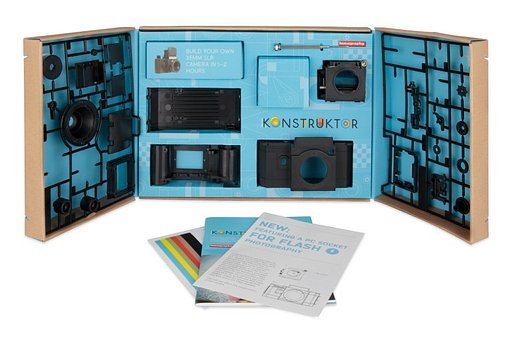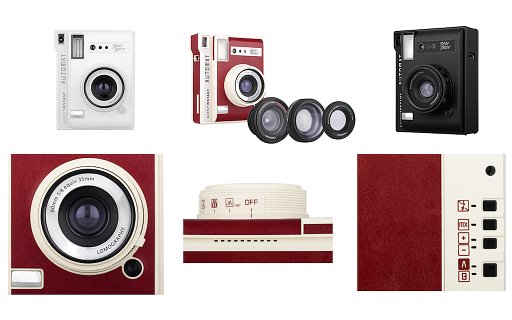Filmshiver's Analogue Experiments with Lomography Film
7Lomographer Filmshiver, also known as Dory, recently caught our eye with his experimental photography, featuring colors so striking you'd swear they were edited (but yes, they're all analogue!) and his powerful black-and-white images. With a large collection of cameras, this hobby has evolved into a fascination with the unpredictable nature of analogue photography.
Hi Dory, welcome to Lomography Magazine! Could you start by telling us a bit about yourself and how you got started with film photography?
Hi there! I’ve been in touch with photography since I was a kid. My first steps were taking digital lo-fi photos with classic Nokias and film photos with point-and-shoot cameras. However, those attempts were mostly subconscious, and during those years, I wasn’t even thinking about the nature of film.
Frequent visits to Finland deeply influenced my vision and inspiration, especially its weather, landscapes, and lakes. Later on, I developed a love for vintage-like photos, polaroid color shifts, but none of the photo editor apps couldn’t satisfy my needs due to obvious artificiality.
Everything changed on one day in August 2020 when I got a brand-new FED-5C that had been bought by some relative more than 30 years ago. I could still catch the fresh oil smell coming from the camera. That’s when I consciously dove into analogue photography.
I shoot expired films and deliberately avoid fresh ones almost completely. Of course, I was aware of film capabilities like natural color reproduction, resolution and so on. Even so, my logic was like: 'If you pursue fancy vivid high quality results, go buy a digital camera and stop wasting money on film'. That’s why fresh film academic shooting seemed boring to me at that time. I was looking for something special that could give unexpected results and transform the image in a more artistic way. Here’s the fact: the first color film I bought was LomoChrome Purple. Despite the amateurish composition of those photos, I was excited enough to try it out even more and more.
I’m not usually one to believe in fate or destiny, but now that I live in the same district as the original LOMO factory in Russia, maybe it is fate after all!
What do you normally like to photograph, and why?
I usually try to avoid taking ‘obvious’ photographs—like attractions or portraits—especially when I’m not traveling. I prefer when a picture has some message, an idea within and a pinch of artistic flair. To be honest, this preference cost me a lot of potentially good photos, because I missed them due to that attitude (a friendly reminder of the ‘don’t think just shoot’ rule, I guess.)
I call what I do ‘saudadegraphy’ because of the dominance of expired films in my gallery. The idea of capturing current reality through the use of old film is fascinating to me. When the results meet or even exceed my expectations, and you can’t tell when a photo was taken, it’s incredibly satisfying. Ironically, many of my exposed film rolls sit in the fridge for years, waiting to be developed as I gather enough to prepare the chemicals for a special process. By then, I often forget when or with which camera I shot the film, but nothing beats the joy of seeing those long-forgotten moments come to life.
I believe film is exposed twice: first when you release the shutter and again when you develop it. Both stages capture your essence—flaws, successes, and all.
Music plays a huge role in shaping my vision. I often take photos thinking, "This could be a nice album cover." Sometimes, I unintentionally recreate real covers, and friends have even used my photos for their own music projects. Sound is crucial in capturing that perfect image in our minds. When I find myself in a special place or moment, I listen to the environment around me—a fusion of image and sound that creates a breathtaking experience.
You have used the Berlin Kino B&W ISO 400 and Fantôme Kino B&W ISO 8 film. What draws you to black and white photography?
Despite obvious absence of colors, monochrome photography can be more telling and expressive than color film, I’d say. Black and white gives you more to guess, to decipher. There is a philosophical element here: it’s all about the light and the dark, their proportions, merging; it is moody by default. Even joyful moments, when captured in monochrome, feel like remnants of the past, often leading me to reflect on the finiteness of all things.
Everything happens at once, and we miss most of it. Monochrome emphasizes the transient nature of life more soulfully than color.
What did you like about the Berlin Kino film?
Berlin Kino caught my attention from the first examples I saw of other Lomographers. It aligns perfectly with my desire to express my view in an old-fashioned yet fresh way. It feels like stepping into the 1960s GDR and buying a new B&W film in a photo studio. The film is neutral in the best way—I love its grain, which is noticeable but not overwhelming. Berlin Kino lives up to its name and seems ideal for urban photography. I regret not using it more in the city center, but I’ll definitely give it another try.
I'm quite satisfied with the overall results, so it’s hard to pick just one favorite. I wanted to experiment with handheld mirrors in my photography, and this is the first roll where I’ve incorporated them. I like the one with fingers on the puddle of light on the pine tree because it depicts some inter-dimensional idea. And of course, this one shows Smena-8M’s Triplet lens bokeh capabilities.
There are some other highlights too, like my cat Muse and her reflection, a shot of me hiding my face in a raincoat from 1986, insane multiple exposure vertigo in the woods as if you’re about to lose touch with anything real.
You shot this film with one of the OG grandfathers of Lomography, the Smena-8M. Can you tell us a bit more about the camera and why you enjoy using it?
Despite surviving at least two repairs, I find Smenas incredibly reliable due to their simplicity and abundance of spare parts. Lightweight and compact, it fits easily in my coat pocket and lets me take multiple shots on a single frame in seconds. I enjoy calculating the focus distance manually, which adds a fun challenge to every photo, whether it's serious or random. Plus, it's great for overlapping exposures. The first film I shot with the Smena-8M was color, and due to a winder lock issue, some frames were exposed two, three, even four times, making the highway look like ancient columns in Palmyra.
Do you have more old cameras in your collection that you would like to share with us? And do you have a favorite among them?
The full list of my cameras can be found in my LomoHome, as I prudently tag every photo I upload. I have a variety of Soviet cameras, but the LOMO Leningrad (left photo) stands out with its built-in mechanical clockwork winder, though it tends to lag in low temperatures. I also have a special place in my heart for my faithful RevueFlex AC-2 (right photo), which has been with me for most of my photos. I'm also excited to shoot on Super8 soon.
Lastly, what are your hopes for the future of analogue photography?
As we slowly approach the 25% mark of the 21st century, I believe we may be among the last generations able to fully utilize the vast array of films produced in the 20th century. My only hope is that the number of film manufacturers remains stable, and that we might see new film models or updates to older ones.
Thank you to Dory for sharing these photos and interesting insights into your world of analogue photography!
เขียนโดย lomocato เมื่อ 2024-09-08 ในหมวด #gear #ผู้คน #experimental #expired-film #finland #scandinavia #lomochrome-purple #berlin-kino






































ไม่มีความคิดเห็น